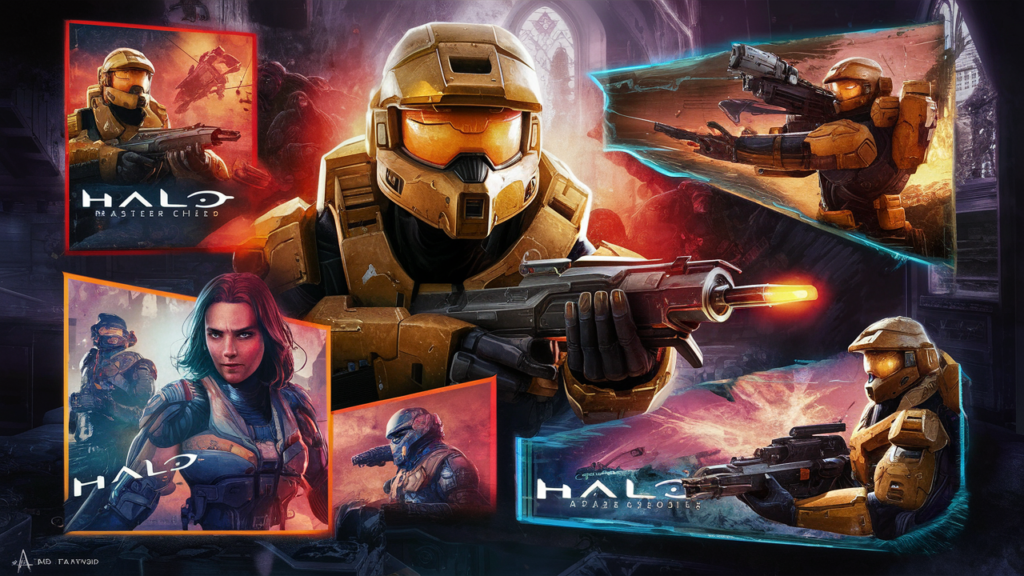The year 2003 marked a significant moment in gaming history with the release of Halo: halo (2003) game icons banners Combat Evolved, a game that quickly became a cultural icon. Although originally launched in 2001, it was in 2003 that Halo firmly established itself as a cornerstone of the gaming world. Central to this success were the game’s distinctive visual elements—particularly its iconic game icons and banners. halo (2003) game icons banners These elements were not merely decorative; they played a vital role in shaping the identity and legacy of the Halo franchise.
What Made Halo’s Visuals So Iconic?
The visuals in Halo (2003) are nothing short of legendary. At the heart of this visual identity were several key symbols and imagery that have become synonymous with the franchise.
- Master Chief: The green-armored super-soldier, known as Master Chief, is perhaps the most recognizable figure in gaming. His imposing presence on the battlefield, coupled with his mysterious nature, made him an instant icon. Every game icon or banner featuring Master Chief conveyed a sense of power and heroism, reinforcing his role as the face of the Halo series.
- The Halo Ring: The titular Halo ring is not just a setting for the game; it’s a character in its own right. The ring’s massive, enigmatic structure captured the imagination of players and became a central symbol in the game’s lore. It featured prominently in game icons and banners, serving as a visual reminder of the game’s deep and intricate universe.
- UNSC Logo: The emblem of the United Nations Space Command (UNSC) became a symbol of humanity’s last stand against alien forces. The logo, often seen in game menus and promotional materials, represented human authority and resilience in the face of overwhelming odds.
- Covenant Imagery: The alien Covenant, with their unique architecture and weaponry, introduced players to a new visual language. The game icons and banners featuring Covenant symbols were instantly recognizable, adding an otherworldly feel to the game.
The Role of Game Icons and Banners
In Halo (2003), the use of game icons and banners went beyond mere aesthetics. These visual elements were carefully designed to enhance the player experience and build the game’s brand.
- In-Game Icons: The small symbols representing weapons, items, and characters were designed with clarity and functionality in mind. Whether it was the simple yet powerful design of the energy sword icon or the instantly recognizable grenade symbol, these icons provided players with essential information at a glance. This helped to streamline gameplay and make the user interface intuitive and user-friendly.
- Banners: Banners in Halo (2003) were more than just decorative elements. They were used in menus, multiplayer lobbies, and promotional materials to establish a cohesive visual identity. These banners often featured dynamic compositions that included key characters, symbols, and the Halo ring itself, creating a sense of anticipation and excitement for the player.
Building a Brand and Enhancing Gameplay
The game icons and banners in Halo (2003) played a crucial role in building the franchise’s brand. Their consistent use across various platforms made Halo instantly recognizable to gamers around the world. This consistency also helped to establish trust and familiarity with the brand, which was essential for the game’s long-term success.
Moreover, these visual elements were integral to enhancing the gameplay experience. halo (2003) game icons banners By providing clear and informative visual cues, the game icons helped players navigate the complex world of Halo with ease. The banners, on the other hand, added to the immersive experience, drawing players deeper into the game’s universe.
The Lasting Impact of Halo’s Visual Design
The influence of Halo (2003) extends far beyond its release. Its iconic visual style has set a benchmark for first-person shooters and science fiction games that followed. halo (2003) game icons banners The game icons and banners, in particular, have been emulated and referenced in countless other games, underscoring their importance in gaming history.
Halo (2003) did not just create a game; it created a visual legacy. halo (2003) game icons banners The game icons and banners are a testament to the power of thoughtful and deliberate design in building a brand that endures.
Conclusion: A Visual Legacy That Endures
The game icons and banners of Halo (2003) are more than just pixels on a screen; they are symbols of a legacy that has shaped the gaming industry. From the iconic Master Chief to the mysterious Halo ring, these visual elements have left an indelible mark on the hearts and minds of gamers worldwide. halo (2003) game icons banners As we look back on the impact of Halo (2003), it is clear that its visual design played a pivotal role in its success, creating a lasting legacy that continues to inspire and influence the world of gaming today.
halo (2003) game icons banners
